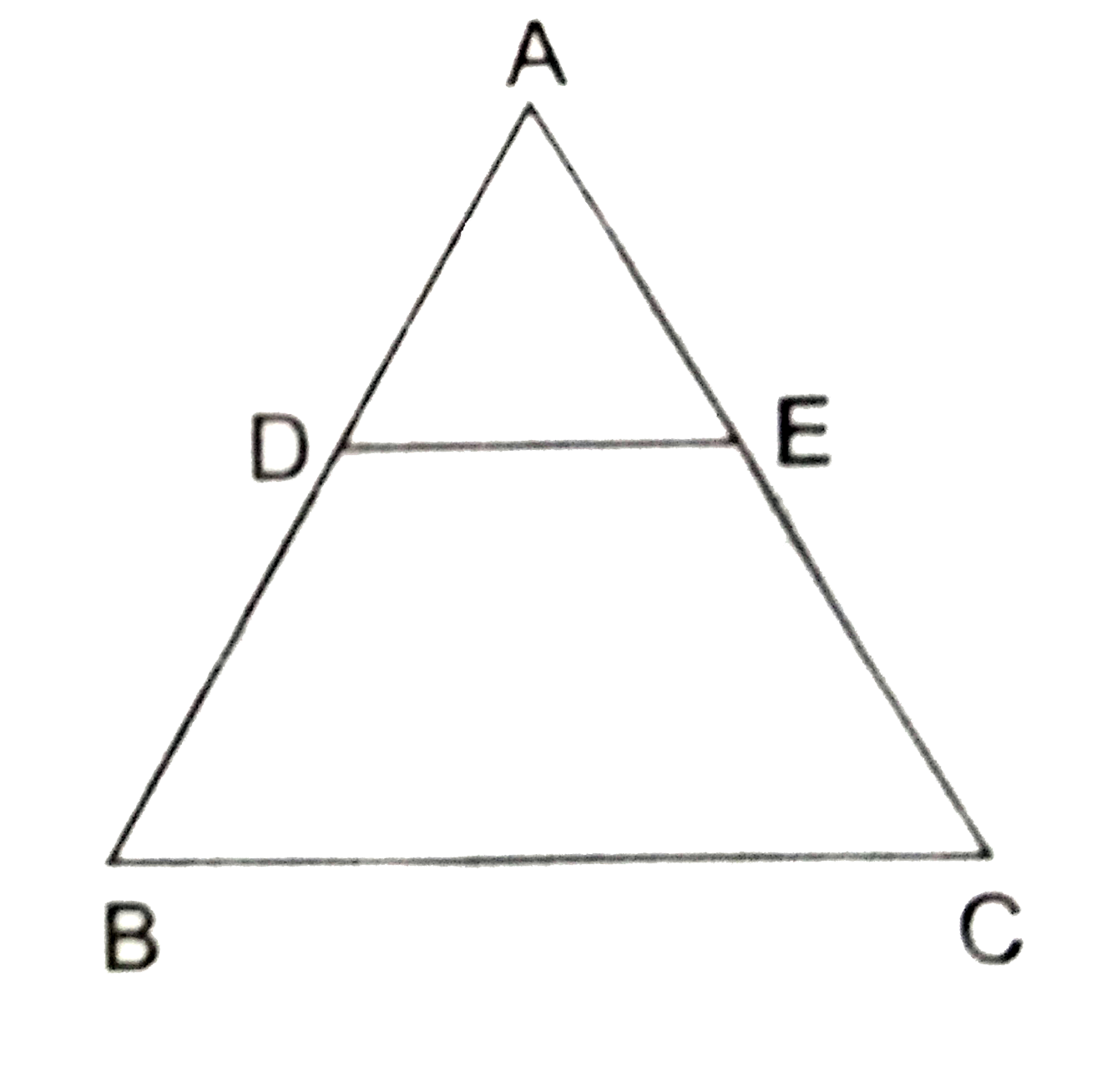In a triangle ABC, AD is the median through A and E is the midpoint of AD, and BE produced meets AC at F. Then AF is equal to
AC/5
AC/4
AC/3
AC/2
To solve the problem step by step, we will analyze the triangle ABC with the given conditions.
Step 1: Understand the triangle and median
In triangle ABC, AD is the median from vertex A to side BC. This means that D is the midpoint of side BC.
Hint: Remember that a median divides the opposite side into two equal segments.
Step 2: Identify the midpoint
Since D is the midpoint of BC, we can denote the lengths as follows:
- Let BD = DC = x (where x is half the length of BC).
Hint: Midpoints divide segments into two equal parts.
Step 3: Locate point E
Point E is the midpoint of AD. Therefore, we can denote:
- AE = ED = y (where y is half the length of AD).
Hint: Use the property of midpoints again to express lengths in terms of variables.
Step 4: Extend BE to meet AC at F
The line BE is extended to meet AC at point F. We need to analyze the triangles formed by this intersection.
Hint: Visualize how extending a line creates new intersections and segments in the triangle.
Step 5: Analyze triangles
We will consider triangles AEG and BCF. Since E is the midpoint of AD and D is the midpoint of BC, we can apply properties of similar triangles and parallel lines.
Hint: Look for similar triangles or use properties of parallel lines to establish relationships between segments.
Step 6: Establish relationships
Since E is the midpoint of AD, and D is the midpoint of BC, we can conclude that:
- AF = FG = GC (because of the properties of the triangle and the midpoints).
Hint: If two segments are equal and parallel, they can help establish equal lengths in the triangle.
Step 7: Write the equation
From the relationships established, we can write:
- AF + FG + GC = AC
Since AF = FG = GC, we can denote AF as z:
- z + z + z = AC
- 3z = AC
Hint: Use algebra to express the total length in terms of the individual segments.
Step 8: Solve for AF
Now, we can solve for AF:
- AF = AC / 3
Hint: This final step involves isolating the variable to find the length of AF.
Final Answer
Thus, AF is equal to one-third of the length of AC:
- AF = (1/3) * AC
In triangle ABC, AD is the median from vertex A to side BC. This means that D is the midpoint of side BC.
Since D is the midpoint of BC, we can denote the lengths as follows:
- Let BD = DC = x (where x is half the length of BC).
Point E is the midpoint of AD. Therefore, we can denote:
- AE = ED = y (where y is half the length of AD).
The line BE is extended to meet AC at point F. We need to analyze the triangles formed by this intersection.
We will consider triangles AEG and BCF. Since E is the midpoint of AD and D is the midpoint of BC, we can apply properties of similar triangles and parallel lines.
Since E is the midpoint of AD, and D is the midpoint of BC, we can conclude that:
- AF = FG = GC (because of the properties of the triangle and the midpoints).
From the relationships established, we can write:
- AF + FG + GC = AC
Since AF = FG = GC, we can denote AF as z:
- z + z + z = AC
- 3z = AC
Now, we can solve for AF:
- AF = AC / 3
Thus, AF is equal to one-third of the length of AC:
- AF = (1/3) * AC
Similar Questions
Knowledge Check
In a △ABC,AD is the angle bisector of ∠CAB and a median to BC. If AC=15 cm, find AB.
AA)12 cmBB)18 cmCC)15 cmDD)can't be determined
In △ ABC, AD is a median. Prove that AB + AC > 2AD
View SolutionIn a triangle ABC A=π3,b=50,c=30,AD is a median through A ,then AD5=
View SolutionIn ΔABC, E is the midpoint of the median AD. BE produced meets AC at F. Prove that AF=(13)AC
View SolutionIn an equilateral ΔABC,D is the midpoint of AB and E is the midpoint of AC. Then, ar(ΔABC):ar(ΔADE)=?

View SolutionIn a △ABC, AD is the median drawn on the side BC is produced to E such that AD=ED. prove that ABEC is a parallelograms.
View SolutionIf D, E and F are respectively, the mid-points of AB, AC and BC in ΔABC, then BE + AF is equal to
View SolutionThe side BC of a triangle ABC is bisected at D;o is any point in AD,BOandCO produced meet ACandAB in EandF respectively and AD is produced to X so that D is the mid-point of OX. Prove that AO:AX=AF:AB and show that FEBC.
View Solution